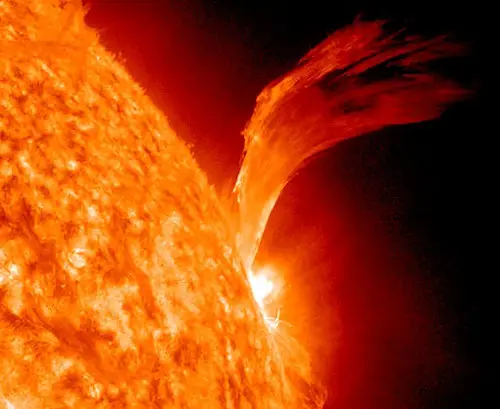Radio blackouts have been reported across parts of the United States following the sun’s release of a powerful stream of energised particles toward Earth early Wednesday morning.
According to the National Oceanic and Atmospheric Administration (NOAA), disruptions were detected over the Midwest and eastern regions of the country around 10:36 am ET.
NOAA also indicated that this interference could be affecting radar, GPS, and satellite communications.
It was reported on Tuesday that NOAA had predicted a 60 percent chance of radio blackouts, which are expected to persist into the weekend.
The sunspot responsible for this stream is the same one that triggered a superstorm earlier this month. That event was anticipated to be one of the most severe in history, prompting NOAA to issue an alert—the first of its kind since 2005.
The previous superstorm caused disruptions to GPS, power grids, farming equipment, and satellites in orbit. The sunspot, which is significantly cooler than the surrounding solar surface, had moved out of Earth’s view for two weeks but has recently reappeared.
NOAA held a briefing earlier this month during a severe geomagnetic storm—a major disturbance of Earth’s magnetosphere—and warned that the sunspot was likely to cause more disruptions upon its return. Over the last 24 hours, solar activity has been classified as ‘moderate,’ with at least 21 flares released, including two powerful ones early Wednesday.
NOAA’s current forecasts show a 60 percent chance of radio blackouts from Wednesday through at least Friday, with a 10 percent likelihood of solar radiation storms.
Solar radiation storms occur when large quantities of charged particles, such as protons and electrons, are accelerated by solar processes. When these particles interact with Earth’s magnetic field and atmosphere, they can cause disruptions to satellite communications and pose radiation hazards for astronauts, as well as interfere with power grids.
Additionally, this week is expected to bring stunning auroras, likely visible in the northern hemisphere.
The sun currently has eight active sunspots on its Earth-facing side, with NOAA reporting that two regions, 3691 and 3697, could emit higher than normal flares this week.


